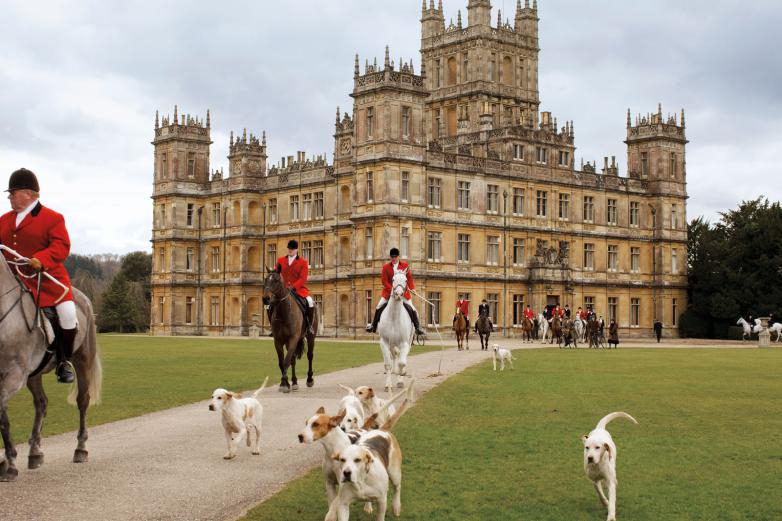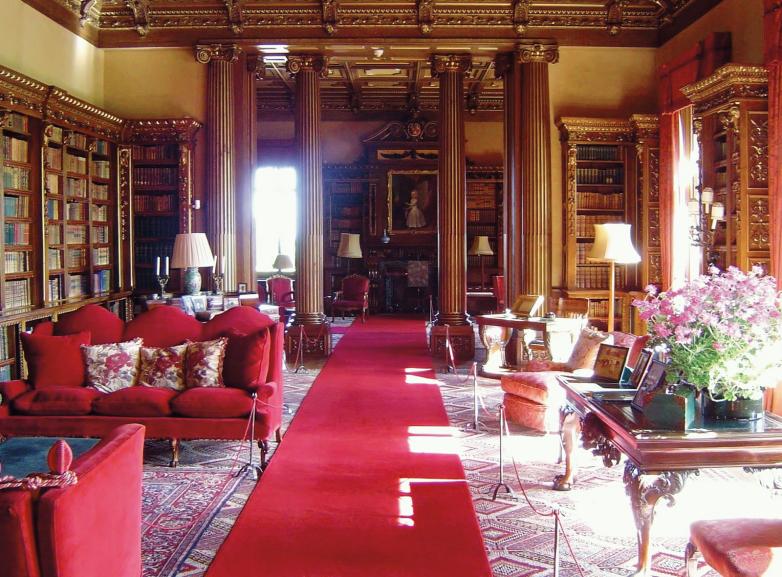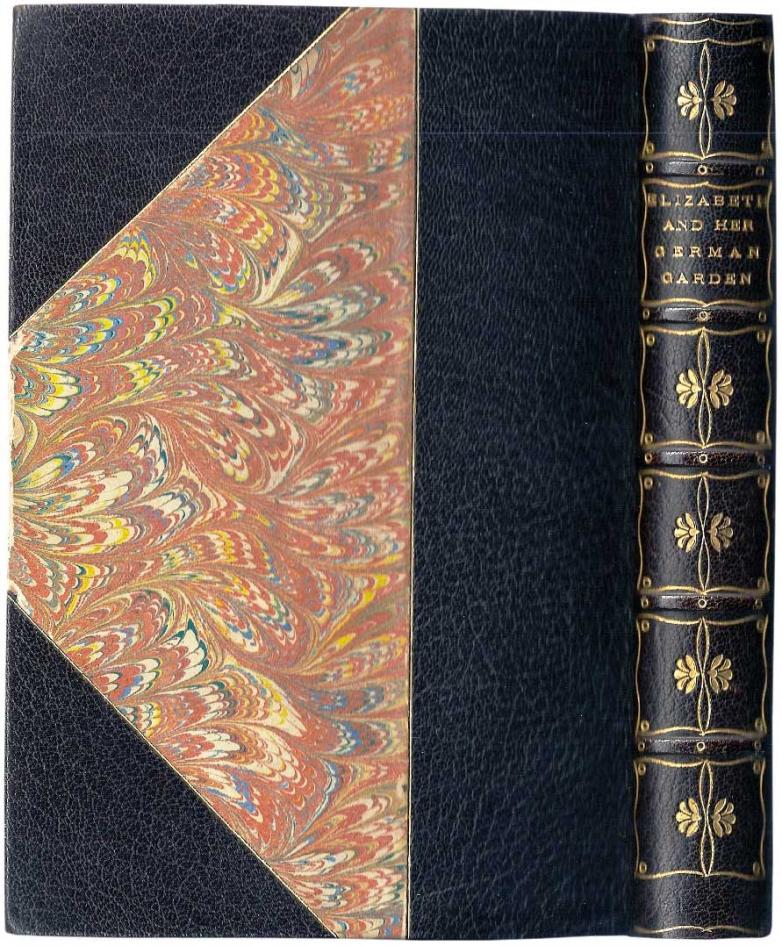Highclere’s library was part of Barry’s original design, but it was Sir Thomas Allom who completed it after Barry’s death. The library’s collection has been built up by all of the earls and countesses who have lived there to its present 5,650 titles covering subjects ranging from history and politics to travel and religion.
Upon entering the room, one is greeted by Stephen Hyde Cassan’s Lives of the Bishops of Winchester, Lives of the Bishops of Sherbourne and Salisbury, Lives of the Bishops of Bath and Wells, et al., which are shelved to the right of the library door. The Bishops of Winchester, incidentally, owned this estate from the eighth century and had their medieval palace on the grounds, after which another house was built on its foundations. The original Highclere site was recorded in the Domesday Book, the great survey of much of England and Wales conducted in 1086. Everything fell to rack and ruin after the death of Bishop William of Wykeham in 1404, and the lands were leased for farming. The Carnarvon family acquired it in 1679.
“Highclere Castle was never burnt down,” said the countess, Fiona Aitken Carnarvon, author of Lady Almina and the Real Downton Abbey, and the present mistress of Highclere. “It has merely adapted and transformed … Its traditional library [catalogued by the Dewey Decimal System] is one that began with my husband’s direct ancestor in 1679.”
A quick peruse of the shelves reveals an interest in travel narratives, including Travels in Asia Minor and Greece (1825) by Richard Chandler, The Parks, Promenades and Gardens of Paris (1869) by William Robinson, and volumes I and II of Memorials of the Discovery and Early Settlement of the Bermudas… (1877) by J. H. Lefroy. Volumes displayed to the left of the fireplace in the library’s second room reflect one forebear’s fascination with Egypt and archaeology. The 5th Earl of Carnarvon, who lived at Highclere a hundred years ago, famously discovered the tomb of the Egyptian boy pharaoh Tutankhamun in 1922 with his archaeological colleague, Howard Carter. (Visitors are welcome to see a related exhibition of Egyptian antiquities in the castle cellars on public opening days.)
One of the favored objects in the library is not a book at all but a small desk, believed to have been used by Napoléon Bonaparte. The desk retains a slit in its top for mail to be slipped through for franking (castles posted their own mail). “I visited here as a child and always remember this desk in the library,” said tour guide Lizzy Howard.
The two rooms comprising the library are useful spaces for the current countess and earl. “A library is for reading, research, and conversation … rooms with cozy corners and different conversations,” Lady Carnarvon said. “I might wish to show a bishop the books about various predecessors in the North Library whilst my husband is holding forth in the other end!”




















